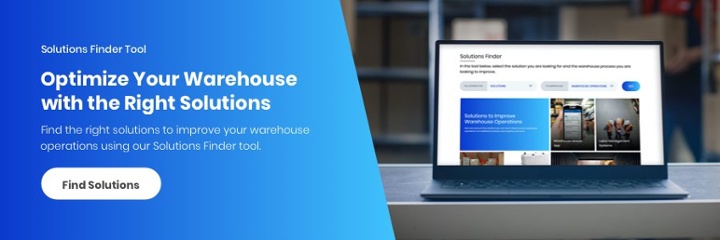Warehouse loading docks can significantly influence the productivity and efficiency of your operations. For example, slow unloading can become a bottleneck to how much goods are handled in the subsequent processes, while slow loading can lead to an overflow of goods in the staging area. Additionally, loading docks are filled with potential danger, so proper safety procedures must be in place.
To help you avoid the scenarios above, we listed four best practices to optimize your loading dock operations and improve warehouse safety and productivity. But first, what is a warehouse loading dock?
What is a Warehouse Loading Dock?
A warehouse loading dock is an entrance or exit point for goods that are being loaded or unloaded from trucks and vans. It is one of the most important areas of the warehouse to keep efficient, as it manages the inflow and outflow of goods, which is directly proportional to the warehouse’s profitability.
The height of a loading dock will depend on the most frequent vehicle accommodated per warehouse, as trucks can range from 30” to 62” in height. Today, the most common dock height is 48” – 52”.

Your frequently accommodated trucks will also determine the width of your warehouse loading dock. Since the majority of trucks today are at least 8’ wide, your loading dock must be able to accommodate this size. Additionally, it is important to note that wider doors require more space, so it is best to keep dock width at the minimum without sacrificing efficiency.
Tips to Optimize Warehouse Loading Dock Operations
1. Implement a Dock Scheduling Software
A dock scheduling software helps improve your loading dock operations by letting carriers book appointments using a scheduling system and allowing you to organize your warehouse operations around the schedule. Additionally, this system can take into consideration operating constraints, such as open/close time, commodities accepted, trailer types accepted, labor resources, equipment, and more.
Having foresight into your daily loading dock operations can let you allocate the proper number of man-hours to accommodate incoming or outgoing cargo efficiently. This enables you to omit over or under allocation of human resources. Also, since labor costs can take 50-70% of a warehouse’s budget, it is integral that it is used most efficiently.
To inquire for a custom dock scheduling software, click here.
2. Utilize the Right Equipment
In addition to having the right amount of labor resources, investing in the right equipment can improve warehouse loading dock efficiency and safety. Some of the equipment we recommend to use are:
Vehicle Restraints
This equipment holds a trailer’s rear impact guard to secure it from vehicle creep or unscheduled departures. This prevents forklift fall-through, which is one of the most dangerous types of accidents occurring at warehouse loading docks.
Vehicle restraints are more preferred than wheel chocks since they are safer and not placed manually like chocks, which are susceptible to incorrect application and human errors.
Hydraulic Dock Levelers
Dock levelers are equipment used to accommodate different trailer floor heights. Hydraulic dock levelers, specifically, are more recommended since it operates with a push of a button and doesn’t require workers to bend down in an awkward position that is susceptible to injury – just like mechanical levelers.
Additionally, hydraulic dock levelers are cost-effective in the long run since they require less maintenance than mechanical levelers.
Conveyors
Conveyors are material-handling equipment that facilitate the transportation of cargo from one place to another. For loading dock operations, warehouse conveyor systems ease the movement of cargo from the truck to the staging area, greatly improving warehouse efficiency and safety because of less human intervention.
To learn more about the must-have equipment in your warehouse, click here.
3. Be Aware and Learn the Possible Dangers
In the industrial sector, 25% of accidents occur at the warehouse loading docks. And, as per OSHA, 71 accidents occurred at loading docks from 2017 to 2019, with 19 of them being fatal.
One of the ways to ensure safety in the warehouse loading docks is knowing the potential dangers. According to ISHN, accidents that occur at the docks can be categorized into five categories, referred to as FACTS:
Remember, awareness is the first step to prevention. To learn ways on how to prevent accidents in the warehouse, click here.
4. Proper Ventilation & Fans
Loading docks involve the use of machines and vehicles that produce hazardous fumes to workers. Without proper ventilation, workers can inhale dangerous chemicals and run into potential health risks, which could cost your company a substantial amount.
In addition to fumes, warehouse loading dock operations involve loading and unloading cargo to and from hot trailers. This can cause dehydration and discomfort, which can decrease productivity or worse, lead to accidents.
To make your warehouse a comfortable place for your employees and provide them with healthy working conditions, check out these 5 practical ventilation tips.
Summary
Loading dock operations require efficient management, as it is responsible for the inflow and outflow of cargo that greatly influences warehouse productivity. Additionally, according to OSHA, it involves 25% of accidents in the industrial sector, so proper safety measures should be in place. Following the four best practices mentioned above can help you process more cargo and increase efficiency, but also, help mitigate accidents.
To find solutions to optimize your warehouse loading dock operations, go to our Solutions Finder tool.
If you want to learn more about warehouse digitalization and optimizing warehouse processes, you can follow us on LinkedIn, YouTube, Twitter, or Facebook. If you have other inquiries or suggestions, don’t hesitate to contact us here. We’ll be happy to hear from you.
- Coinsmart. Europe’s Best Bitcoin and Crypto Exchange.Click Here
- Platoblockchain. Web3 Metaverse Intelligence. Knowledge Amplified. Access Here.
- Source: https://articles.cyzerg.com/loading-dock-warehouse-best-practices-to-optimize-efficiency-safety





